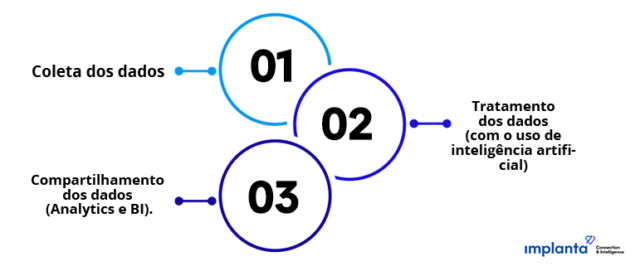For industries, understanding how to monitor customer activation is crucial to achieving sales objectives. However, fully exploring the potential of your partner portfolio is a real challenge.
Fortunately, technology can help solve these issues!
And the reason is simple: data plays a leading role, and industries with a more consolidated supply chain already know this.
Maximizing customer activation — that is, increasing recurring sales from your current portfolio — is highly significant.
But do you know exactly what Customer Activation is? And Sales Activation in Indirect Channels? Follow our article and learn more about the subject.
What is Customer Activation?
Customer activation is an indicator that analyzes the monthly return that each customer brings to the company, i.e., the number of sales and revenue achieved by the salesperson from their customer portfolio.
To calculate this, it's necessary to monitor the number of customers, visits made to each customer, and sales made during each visit.
Through customer activation, the company defines, refines, and adjusts its sales strategy with the aim of achieving greater profitability for the business.
5 Advantages of Customer Activation
Customer activation not only enhances the quality of the relationship between customer and salesperson but also improves inventory management, qualifies sales, and provides a clearer market insight.
Below, we list the 5 main advantages of customer activation for your company:

- React quickly to customer activation drops by changing the sales strategy;
- Improve customer service based on purchasing behavior;
- Ensure customers remain active, purchasing at the desired frequency;
- Easily identify the need to train the sales team;
- Analyze market trends and implement actions to align with new behaviors.
Sales Activation in Indirect Channels
As you may have already noticed, effectively managing an indirect sales channel is indeed a challenging mission.
After all, once the industry begins to rely on distributors as business partners to sell their products, there is a risk of not having sufficient information about the sales performance and inventory of these goods, which can adversely affect the entire supply chain planning.
However, on the other hand, there are numerous benefits to utilizing indirect sales channels.
Nevertheless, this strategy will only be worthwhile and yield competitive results if accompanied by proper management.
Visibility into distribution helps optimize processes on both ends – for both the industry and the distributor.
Consider the case of a manufacturer of cleaning products who, upon properly managing their distributors, discovers that the customer activation rate is below target.
With this knowledge, it is possible to establish a collaborative relationship with distributors to investigate the causes and address them appropriately, focusing on common objectives without compromising individual ones.
A Data-Driven Sales Management Is the Path to Growth
It is crucial to emphasize that sales management is increasingly tied to data intelligence and less to guesswork – as it was once highly valued in the field.
A proper commercial leadership is one that can look at the numbers and understand opportunities for adjustments and innovations, capable of setting the company on the necessary growth trajectory.
Moreover, a good leader knows when to launch sales incentive campaigns and work with rewards for the sales team.
For these reasons, to make the best decisions and guide the team more effectively, understanding metrics such as customer activation becomes essential.
Improving Your Customer Activation Using Integration Tools
Implanta is a company committed to modernizing its industry, impacting decision-making through better use of data.
Therefore, it operates with proprietary tools for enhanced customer activation.
It's possible to expand the dataset for analysis beyond the traditional internal data maintained in ERP and SCM (Supply Chain Management) systems.
Additionally, Implanta combines powerful statistical methods with new and existing data sources.
This creates new insights that help improve decision-making throughout the supply chain, from enhancing frontline operations to strategic choices, such as understanding sales metrics for each distribution channel.
And in practice? Well, Implanta's solutions are divided into three parts:

- data collection;
- data processing (using artificial intelligence);
- data sharing (analytics and BI).
In addition to integration tools, Implanta collects and processes data, leveraging artificial intelligence to ensure accurate information.
How about improving your production efficiency, avoiding stockouts, and enhancing sell-out strategies?
With Implanta, your company will have more than a business partner; it will have a technological arm that empowers all management and sales teams of your business. Contact one of our specialists to learn more.






